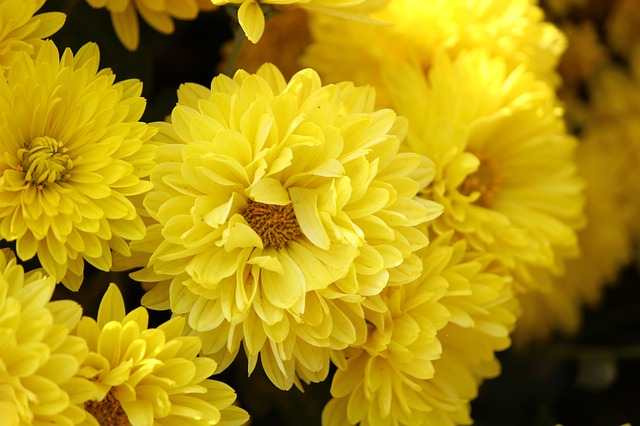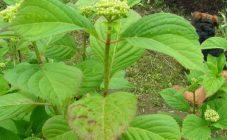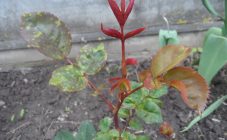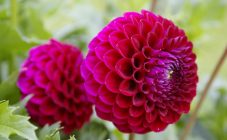Content:
- General rules for caring for chrysanthemums at home
- Chrysanthemum does not bloom, what to do
- How to speed up the flowering of chrysanthemums
- Chrysanthemum leaves turn yellow: what to do?
- Why brown spots appear on the leaves
- Aphids on chrysanthemum: how to get rid
- Why do chrysanthemum buds dry
- Disease prevention
- Growing chrysanthemums in a greenhouse
Chrysanthemum is a widespread autumn flower. Its multi-colored lush heads adorn flower beds and even indoor window sills. Despite its simplicity and unpretentiousness, it still requires attention and proper care.
General rules for caring for chrysanthemums at home
Compliance with the basic rules of growing is the first and most important condition for success in floriculture.
Choosing a landing site
In order for bright flowers to please the eye, you need to take seriously the choice of a landing site. This flower will not grow in any soil. When planting chrysanthemums in open ground, you need to take care of its preparation in advance. The plant feels good in loam, on elevations.
It is undesirable to choose low-lying areas with high humidity for planting.
Chrysanthemums love light, so they need to be planted in elevated, sunlit areas.
Watering
The most important thing here is not to overdo it, since chrysanthemums tolerate excessive moisture very painfully. In principle, a plant can do without watering for a long time, but then it will not please with lush flowers. Regular watering is important during the growth and ripening of the buds, and when flowering begins, it can be stopped.
For irrigation, use warm water, trying to prevent it from getting to the base and on the leaves.
Pruning
In order for the bush to be lush, pinch the shoots, remove wilted flowers, old and diseased leaves. Such events contribute to long flowering.
Chrysanthemum does not bloom, what to do
Chrysanthemums are loved by many flower growers because they decorate the garden until late autumn. But it so happens that the chrysanthemum does not bloom and the grower does not know what to do.
Why chrysanthemum does not bloom in the garden:
- Lack of space. If the bushes are planted too densely, they will lack the nutrients and moisture to form flowers.
- The wrong place. Bushes planted in shaded areas or lowlands will not bloom. In lowlands, there is often increased soil moisture, which causes the roots to rot.
- Poor soil. If the chrysanthemum grows in the open field, you should take care of its enrichment with nutrients. This will help the plant to bloom.
Another common reason for the lack of flowers is chrysanthemum disease.
How to speed up the flowering of chrysanthemums
Chrysanthemum is an autumn plant, so it happens that it does not have time to bloom before the first frost. Experienced growers advise treating the plant with special preparations, mineral dressings, and also removing some of the buds.
Chrysanthemum leaves turn yellow: what to do?
Yellow leaves spoil the appearance of the bush and indicate a disease. Therefore, you need to solve this problem as soon as possible.
Why do the leaves of a chrysanthemum in a pot turn yellow? If this happens, it is worth trying to drain. Perhaps the soil is too dense and moisture does not penetrate to the roots.Another reason is the pot is too tight, which is why the plant lacks the necessary substances.
Yellowing of the leaves is also caused by such diseases of garden chrysanthemum as rust and septoria.
Why brown spots appear on the leaves
Light brown spots indicate a disease such as gray rot. The main reason is a lack of air, which occurs if the bushes are too close to each other. To prevent the disease, the bushes are sprayed with preparations based on copper. It is also important to choose the right landing site.
Black spots on chrysanthemum leaves are a sign of septoria. The causative agent of this disease lives in last year's foliage. For prevention, you should:
- Do not plant too thickly;
- Thin bushes regularly;
- Remove diseased leaves;
- Avoid waterlogging.
Aphids on chrysanthemum: how to get rid
One of the common pests of chrysanthemums is aphids. It is visible to the naked eye as black, white or brown dots. These small harmful insects suck out all the nutrients from the shoots, causing the death of the plant. Therefore, if aphids have appeared on a chrysanthemum, flower growers are looking for ways to get rid of it quickly.
How to get rid of aphids on a home chrysanthemum? The safest way is with folk remedies. They are good because they do not contain chemicals. The most popular methods are:
- Processing with onion or garlic infusion.
- Hand cleaning with soapy water.
- Tobacco processing (it is sprinkled on the soil around the bush).
If aphids appear on the chrysanthemum, how to destroy it must be decided as soon as possible, otherwise the plant will die.
Why do chrysanthemum buds dry
If the buds dry, the reason may be:
- Failure to comply with the proportions and regularity when applying fertilizers.
- Drying out of the soil, or vice versa, excessive moisture.
- Damage by harmful insects.
Mites, for example, like dry environments, but weevils like abundantly watered flower pots. Both those and others gnaw flower buds, causing the latter to dry out.
Disease prevention
Diseases cause irreparable harm to chrysanthemums. Treatment of many of them is a rather complicated process, so regular preventive measures should be taken. The simplest ways to reduce the likelihood of damage by chrysanthemum pests, fungi and others is to follow the basic rules of care.
A good effect is given by the treatment of bushes with chemical or home remedies.
Growing chrysanthemums in a greenhouse
Some growers, especially those who sell flowers, grow them in a greenhouse. The advantages of this method are that under certain conditions the plant can bloom all year round. Chrysanthemum diseases and pests are not so active in the greenhouse.
So, observing agricultural techniques and carrying out preventive treatments, you can enjoy bright flowering for more than one month.














